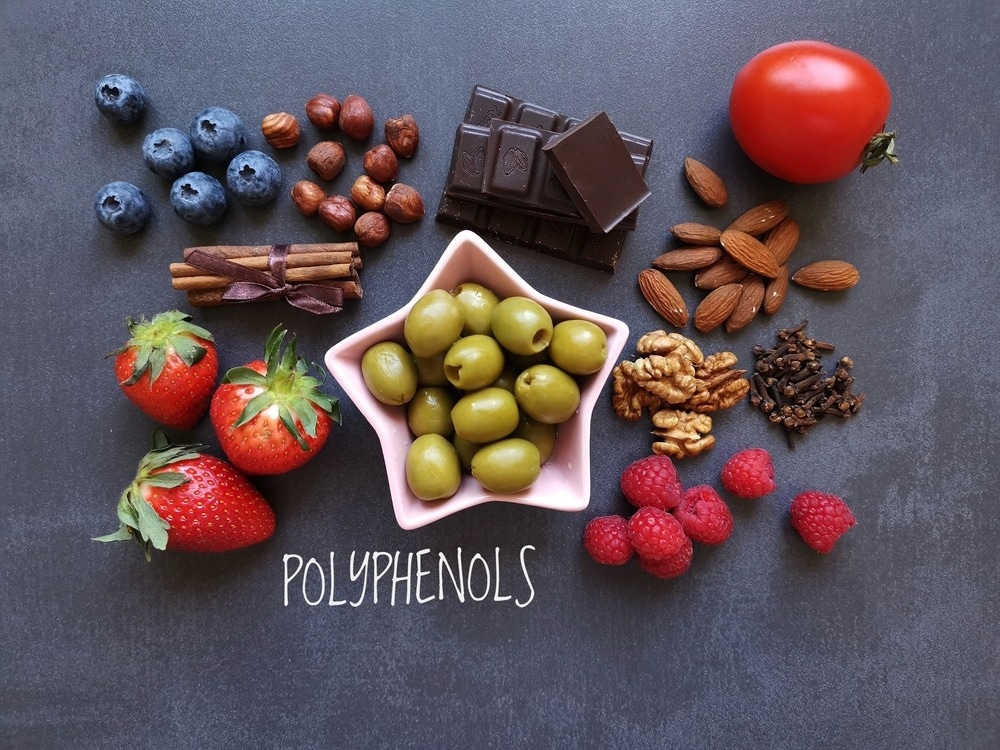Dietary polyphenol intake reduces risk of metabolic syndrome

In a recent study published in Nutrition, Metabolism, and Cardiovascular Diseases, researchers investigate the relationship between dietary polyphenol intake and metabolic syndrome (MetS).

Background
Polyphenol-rich foods are associated with cardiometabolic risk-lowering properties, with most studies reporting the benefits of flavonoids, including anthocyanins, flavonols, and flavan-3-ol classes. Although polyphenols have been extensively researched in the context of MetS through bibliometric analyses, data on the association between habitual polyphenol intake and MetS are limited.
Previous studies have reported that individuals with greater polyphenol intake have a lower probability of developing MetS, increased waist circumference, blood pressure, and triglycerides (TG) levels, lower high-density lipoprotein cholesterol (HDL-c) levels among women, and elevated fasting blood glucose levels among men and women.
The PREDIMED-Plus study findings showed positive correlations between dietary polyphenol intake and HDL-c levels; however, there was no association between total polyphenol consumption and other metabolic disease characteristics.
About the study
In the present observational study, researchers evaluate the cardiometabolic protection conferred by dietary polyphenols.
The study was conducted between August 2017 and January 2018 and comprised 676 Danish adults who participated in the Danish diet, cancer, and health-next generations (DCH-NG-MAX) trial. Dietary and clinical data were obtained using online 24-hour dietary recalls (24-HDRs) at baseline, six months, and one year.
The online tool was linked to the national food database of Denmark and comprised 1,600 food items. Other food data sources utilized in the study included the food agency of Sweden, the food composition table by McCance and Widdowson, and the myfood24 database. Secondary analyses were performed to assess differences in the associations by age, sex, smoking habits, and medical history.
Dietary polyphenol intake was estimated using the Phenol-Explorer database data. Total polyphenol intake was calculated by summing up the content of esters, aglycones, and glycosides. Dietary polyphenol intake was also estimated by class, including phenolic acids, flavonoids, stilbenes, lignans, tyrosol, and alkylphenol.
Cancer Research eBook

Generalized linear mixed modeling was performed to determine the association between dietary polyphenol consumption and cardiometabolic disease, and the odds ratios (OR) were determined.
Data were primarily obtained by chromatography, with adjustments made for gender and age, as well as dietary and lifestyle variables. Metabolic disease was identified using the International Diabetes Federation criteria.
The DCH-NG MAX trial was conducted between August 2015 and April 2019 and comprised 39,554 adults, including their biological children, spouses, and grandchildren, representing the first-generation, first-generation-parents, and second-generation DCH study participants, respectively.
Results
The mean participant age was 44 years and the mean total polyphenol intake was 1,368 mg/day, with 12% of individuals having MetS at baseline. In comparison to Q1 (initial three months), MetS patients, the total polyphenol, flavonoid, and phenolic acid intake associated with Q4 individuals led to a 50% reduction in their likelihood of developing metabolic disease.
Greater consumption of polyphenols, phenolic acids, and flavonoids was related to lower levels of HDL-c and systolic blood pressure (SBP). MetS prevalence rates were 12%, 9%, and 12% at baseline, six months, and one year, respectively. Furthermore, MetS prevalence rates ranged from 6% to 15% in quartiles of total polyphenol consumption and class-wise intake.
Sensitivity analyses, which excluded individuals with unhealthy lifestyles and comorbidities, yielded similar findings. Of note, the statistically significant relationships for the total polyphenol and phenolic acid intake were observed only among non-smokers. Intake of flavonoid polyphenols, stilbene polyphenols, and tyrosol polyphenols correlated inversely with waist circumference measurements.
Total polyphenol intake showed an inverse association with SBP and diastolic blood pressure (DBP) values. Results were most consistent for the association between the intake of total polyphenols, flavonoids, and phenolic acids and the probability of having low HDL-c levels; however, alkylphenol intake and low HDL-c were positively correlated. Only phenolic acid intake was related to high-sensitivity C-reactive protein (hs-CRP) levels.
Conclusions
Overall, the study findings showed that greater consumption of polyphenols, phenolic acids, and flavonoids lowered MetS risks. The main polyphenol class contributors were phenolic acids and flavonoids at 63% and 32%, respectively, with proanthocyanidins and hydroxycinnamic acids most commonly consumed.
- Lanuza, F., Zamora-Ros, R., Bondonno, N. P., et al. (2023). Dietary polyphenols, metabolic syndrome and cardiometabolic risk factors: An observational study based on the DCH-NG subcohort. Nutrition, Metabolism and Cardiovascular Diseases. doi: 10.1016/j.numecd.2023.02.022
Posted in: Medical Science News | Medical Research News | Disease/Infection News
Tags: Blood, Blood Pressure, Cancer, Cardiometabolic, Children, Cholesterol, Chromatography, C-Reactive Protein, Diabetes, Diet, Esters, Fasting, Flavonoid, Food, Glucose, Lipoprotein, Metabolic Disease, Metabolic Syndrome, Metabolism, Nutrition, Phenol, Polyphenol, Protein, Smoking, Syndrome

Written by
Pooja Toshniwal Paharia
Dr. based clinical-radiological diagnosis and management of oral lesions and conditions and associated maxillofacial disorders.
Source: Read Full Article